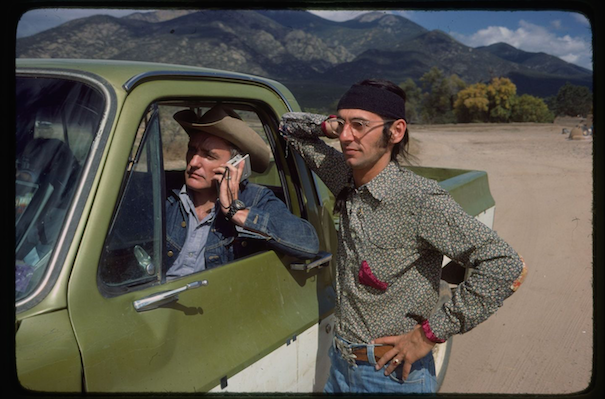‘Along for the Ride’ Carries New Weight for Legend
In Nick Ebeling’s remarkable biography documentary, many sides of the legendary filmmaker, fine artist, film producer, photographer Dennis Hopper are explored
October 31, 2017
“My personal life is troubled, but it never interfered with my works.” This quote from legendary film star Dennis Hopper appears midway through the new documentary “Along for the Ride.” The film is an interior look into Hopper’s life and career, which the quote aptly describes. However, director Nick Ebeling’s overview of an icon is not told by Hopper himself. Instead, his narrative is told through the lens of a close comrade named Satya de la Manitou. The conversations with Manitou — and others who Manitou talks with — consume the film’s 90-minute runtime and reaffirm Hopper’s own thoughts on his film career. These interviews dissect Hopper not only as an artist, but as a person.
At its core, “Along for the Ride” discovers who Hopper was through his interactions with other people. The most prominent person here is unequivocally Manitou. The viewer quickly learns the level of significance he held in Hopper’s life, with exposition detailing their four decades of collaboration. Yet Manitou embellishes himself with the nickname “El Hombre Indivisible;” he dims the spotlight on himself and focuses squarely on describing Hooper and his antics. As the audience familiarizes itself with Manitou’s asides, the scene-consuming personality Hopper is widely known for crosses over into areas of his life less known to the public.
Even in describing the less appealing aspects of his character, Manitou speaks with nothing but utter fascination for Hopper. It is this hyphenation of persona which influences the on-screen footage in “Ride;” acting as an unofficial narrator of sorts, Manitou uses his stories to weave together the overview of Hopper’s career. The meshing of pure facts with deeply personal stories creates a complex portrait of Hopper. The spectator becomes as entranced with the oral history of his status as with his venerable achievements.
But Manitou is not alone in his zeal for his old friend. A plethora of individuals who knew Hopper — ranging from David Lynch to Frank Gehry — gave interviews, which are spliced throughout the film, making interjections on both Hopper’s private life and exposition. While they keep the film in traditional stylistic territory for subject documentaries, their contributions adhere to the idea of using personal histories in lieu of fact.
All of these personal ties lead to a sense of intimacy in the film, which is carried over into the film’s formal qualities. Shot in black and white, Ebeling’s directorial debut is composed with the detailed precision of an old pro. He tampers with camera focus so attentively that the film’s form seems like heirloom to cherish. Shots are constructed of interviewees and various landscapes attributed to Hopper with artfulness and stillness, adding to the gracefulness of the documentary.
“Along for the Ride” reiterates that Hopper was a personality too big to encapsulate. But for how illustrious he was shown to be, the film showcases a small, intimate feeling in coming to recognize the life he led through the lives of others. Manitou states that “the right-hand men … want to keep the engine moving,” and through sharing his and others’ connections with Hopper, the engine has moved into a new realm, elevating his already legendary status.
“Along for the Ride” opens at the Metrograph at 7 Ludlow St. on Friday, Nov. 3.
Email Matthew Holman at [email protected].

























































































































































